Kingston HyperX Predator 480GB m.2 PCIe SSD Review
Why you can trust Tom's Hardware
A Closer Look At The Kingston HyperX Predator
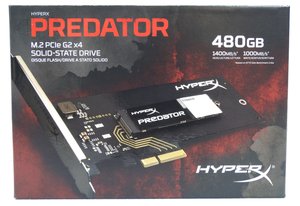
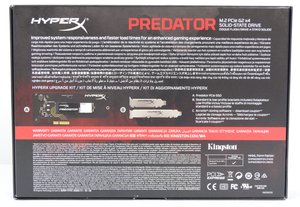
It's been a few years since Kingston released a premium SSD with this much attention to detail in the presentation. The back of the package gives us quite a bit of information about the product, which will hopefully carry over to a more informed shopping experience.
The Predator sits under layers of paper and foam with the documentation in between. Inside, we find a sticker, code for Acronis True Image and a warranty statement.
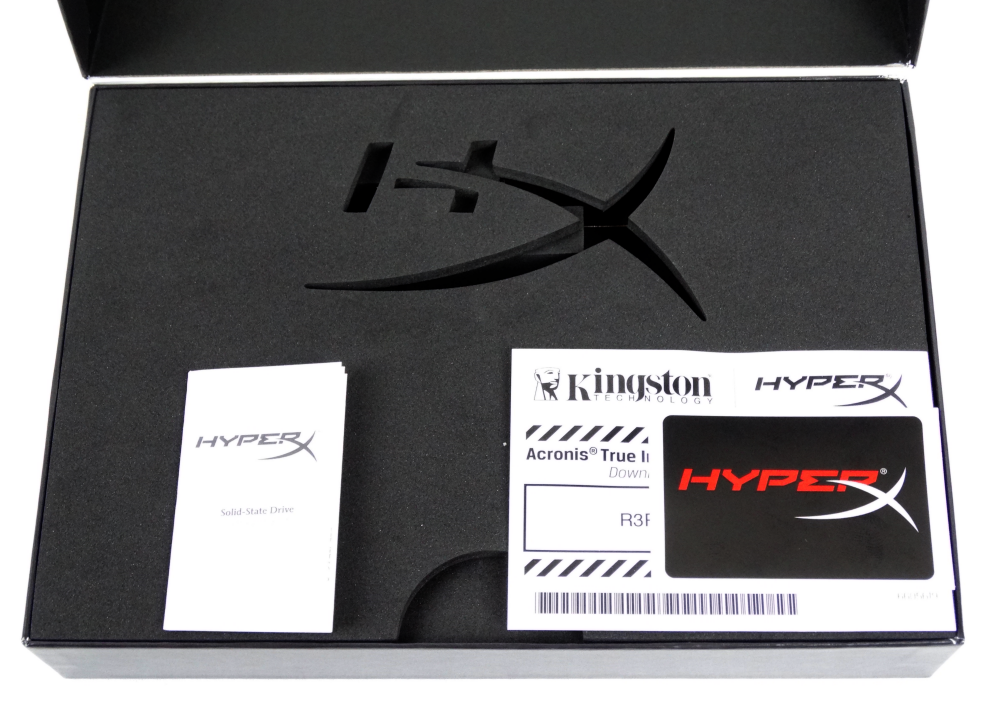
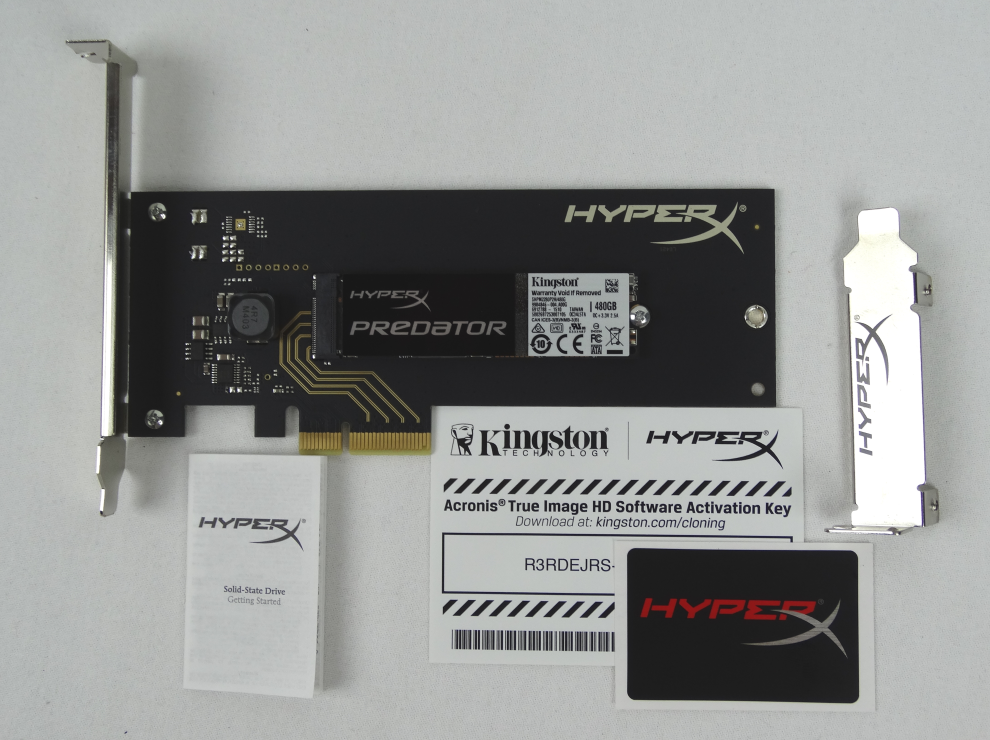


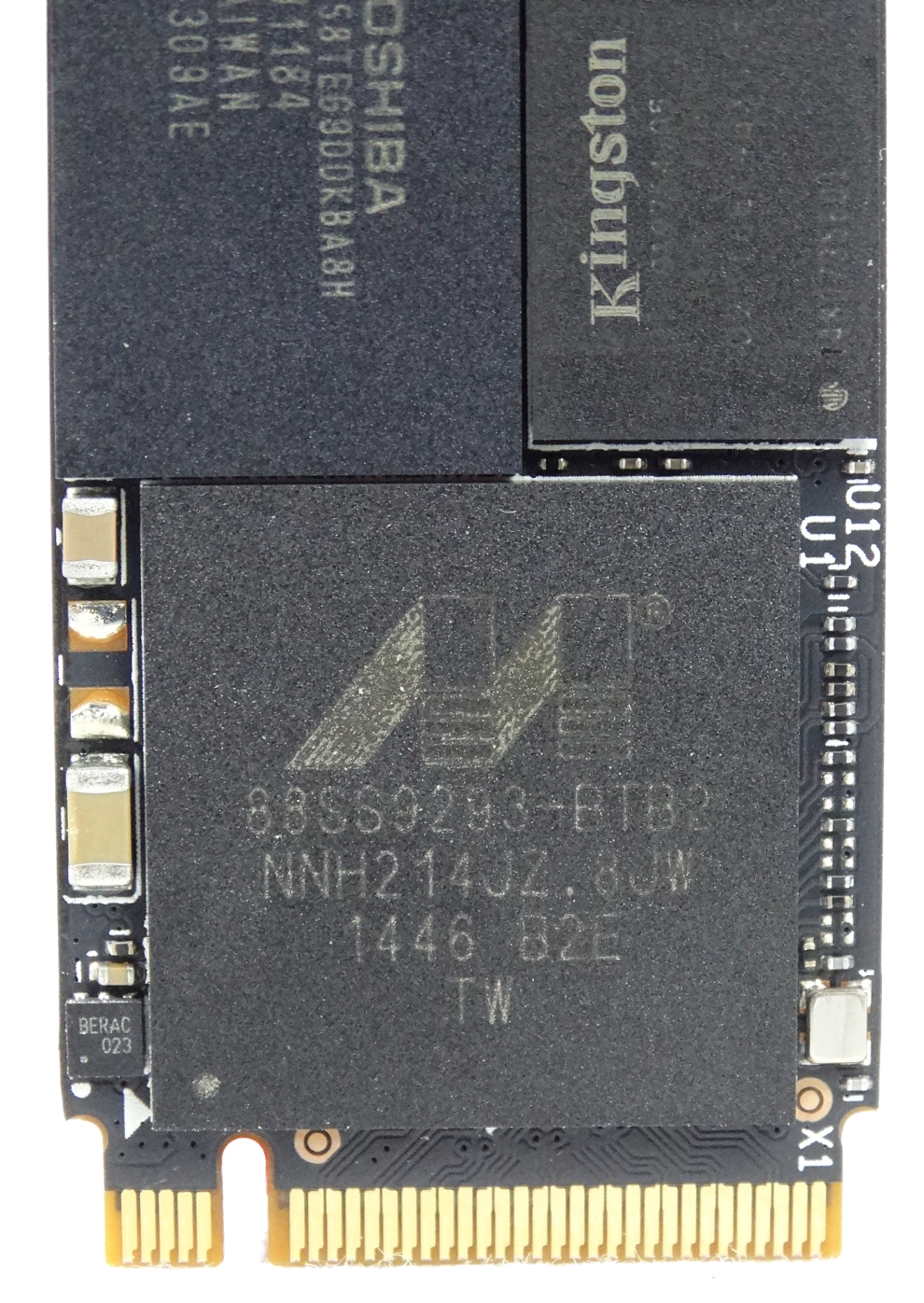
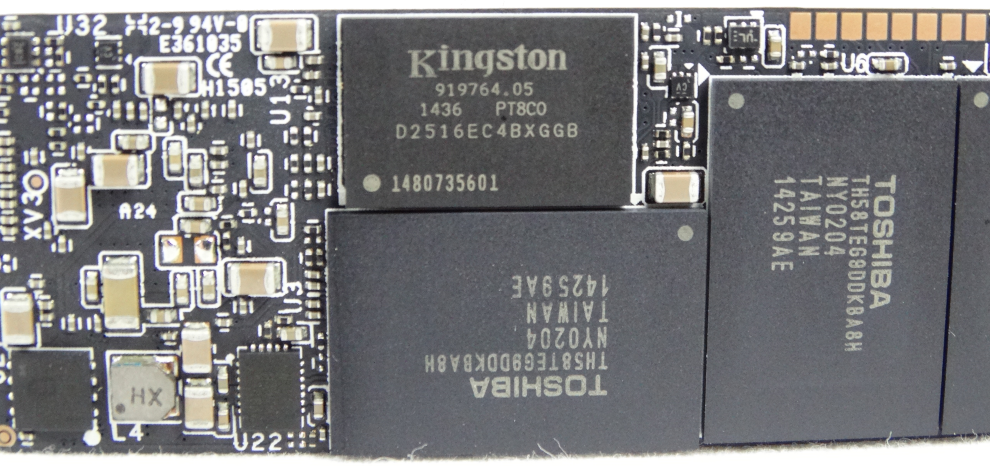
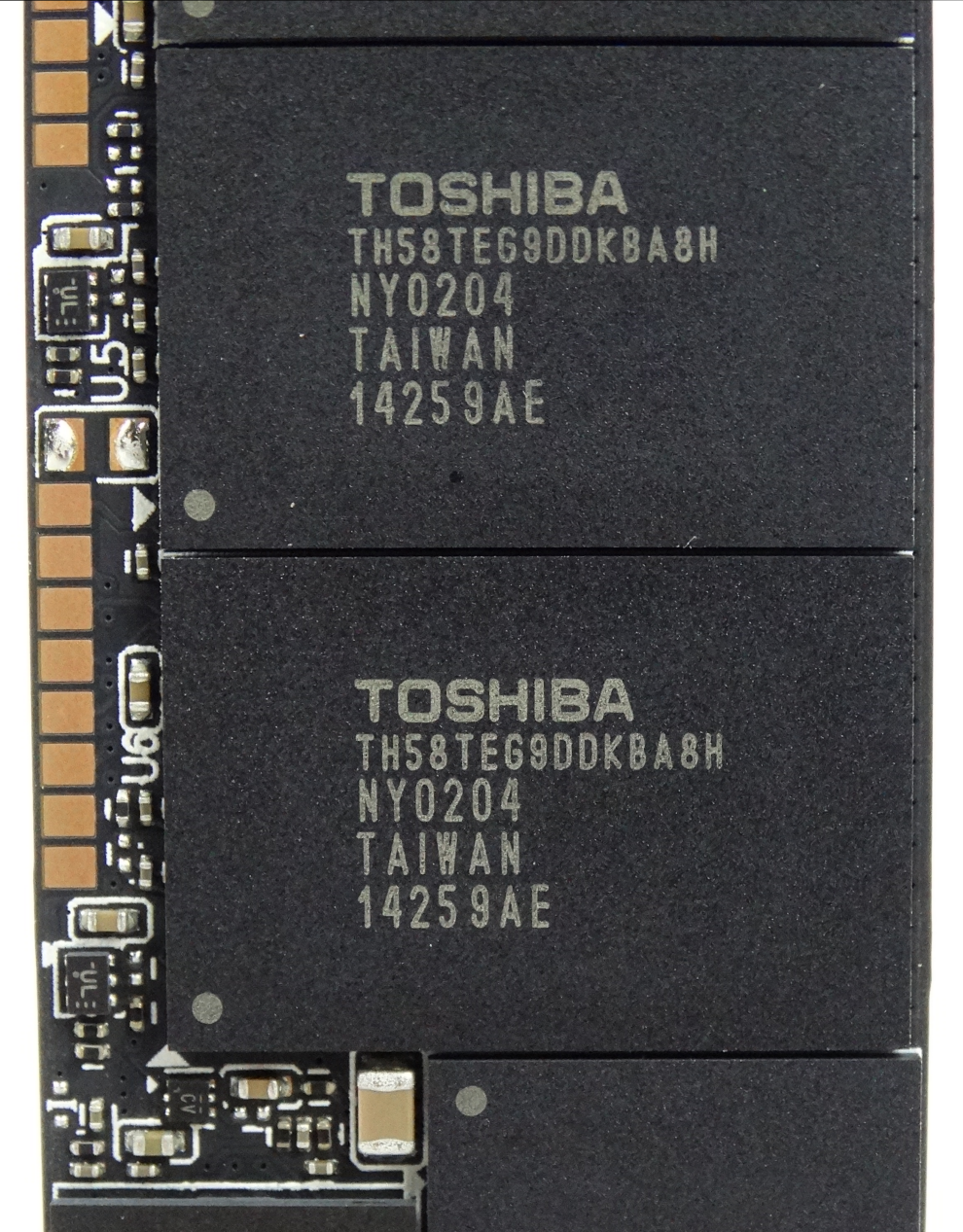
Here are the package contents laid out. We're testing the 480GB model that ships with a desktop PCIe to M.2 adapter. The HyperX-branded card includes two backplates, one for half-height and one for full-height installations. Most 2U servers require the smaller bracket.
Kingston manages to cram eight Toshiba A19 NAND flash packages on the M.2 2280 double-sided form factor. Most early adopters will use the HyperX Predator in a desktop, but over time more mobile users will choose M.2-based SSDs to replace the drives that ship in notebooks. Lenovo charges $700 for a 512GB PCIe-based M.2 SSD in the X1 Carbon Gen 3. It would be cheaper to purchase the Ultrabook with a SATA-based drive and upgrade it with a faster PCIe-based SSD like the HyperX Predator.
The HyperX Predator uses a second-generation PCIe-to-flash controller, which is newer than the Marvell processor used by Plextor in its M6e-series products.
Kingston has a lot of experience packaging DRAM, and it uses the company's own branded product to buffer page table data.
The flash comes from Toshiba and is second-generation 19nm NAND. We were surprised to see so many packages on the 2280 form factor. It's a tight fit, but Kingston squeezes everything in.
Get Tom's Hardware's best news and in-depth reviews, straight to your inbox.
Current page: A Closer Look At The Kingston HyperX Predator
Prev Page Endurance And Warranty Next Page Sequential Read
Chris Ramseyer was a senior contributing editor for Tom's Hardware. He tested and reviewed consumer storage.
-
blackmagnum A fast and furious SSD most suited for desktops, but doesn't work well with mobile notebooks? I don't know how Kingston will be able to compete with this product!Reply -
mapesdhs "After using the software, you simply tell the BIOS to boot from the Kingston SSD and everything works as it should."Reply
After first disconnecting the old device though, because otherwise Windows won't boot - it assumes the presence of another Win inst with the same ID is suspicious. I'm surprised this isn't mentioned more often when free cloning sw is highlighted in an SSD's accessory package.
Re pricing, the tiny difference between the M.2 and PCIe versions shows just how much one gets ripped off when buying other types of HBA, given Kingston is happy for the gap to be just $12, though I don't get why the gap is larger for the 480GB when it's the same item that's excluded for the M.2 version.
Personally, depsite the performance of this device, the small warranty would put me off.
Ian.
-
mapesdhs Reply15881456 said:How about adding nvme based Intel 750 400gb SSD to the equation?
Yes, that and one good standard SATA3 for comparison, preferably the 850 Pro 512GB.
Btw, is it just me for whom all the thumbnail images in the results galleries are blank?
Ian.
-
milkod2001 it might be easier for readers to understand if you stick with just numbers instead of millions of colorful lines all over the place.Reply
it would be nice to have comparison with regular SSD. Is it better than that. I can't tell from this review :( -
CRamseyer ReplyHow about adding nvme based Intel 750 400gb SSD to the equation?
At the time I didn't have the Intel SSD 750 400GB. I do now and the review should come out very soon. -
CRamseyer Replyit might be easier for readers to understand if you stick with just numbers instead of millions of colorful lines all over the place.
it would be nice to have comparison with regular SSD. Is it better than that. I can't tell from this review :(
I'm just about finished with an article that puts the SM951-NVMe and SM951 AHCI against an 850 Pro.
Even without the data to compare in this review we know that the 850 Pro (512GB and 1TB) does roughly 550 MB/s sequential read, a bit over 500 MB/s sequential write, 98K random read IOPS and roughly 90K write IOPS in my testing.
If you compare equal capacity sizes, nearly every product in this review performs better than 850 Pro.
I'm up against a hard limit of the number of products I can put in the charts without needing a magnifying glass to look at the data. I'll see about coming up with something a little better for the Best of SSD Monthly column.
-
milkod2001 Replyit might be easier for readers to understand if you stick with just numbers instead of millions of colorful lines all over the place.
it would be nice to have comparison with regular SSD. Is it better than that. I can't tell from this review :(
I'm just about finished with an article that puts the SM951-NVMe and SM951 AHCI against an 850 Pro.
Even without the data to compare in this review we know that the 850 Pro (512GB and 1TB) does roughly 550 MB/s sequential read, a bit over 500 MB/s sequential write, 98K random read IOPS and roughly 90K write IOPS in my testing.
If you compare equal capacity sizes, nearly every product in this review performs better than 850 Pro.
I'm up against a hard limit of the number of products I can put in the charts without needing a magnifying glass to look at the data. I'll see about coming up with something a little better for the Best of SSD Monthly column.it might be easier for readers to understand if you stick with just numbers instead of millions of colorful lines all over the place.
it would be nice to have comparison with regular SSD. Is it better than that. I can't tell from this review :(
I'm just about finished with an article that puts the SM951-NVMe and SM951 AHCI against an 850 Pro.
Even without the data to compare in this review we know that the 850 Pro (512GB and 1TB) does roughly 550 MB/s sequential read, a bit over 500 MB/s sequential write, 98K random read IOPS and roughly 90K write IOPS in my testing.
If you compare equal capacity sizes, nearly every product in this review performs better than 850 Pro.
I'm up against a hard limit of the number of products I can put in the charts without needing a magnifying glass to look at the data. I'll see about coming up with something a little better for the Best of SSD Monthly column.it might be easier for readers to understand if you stick with just numbers instead of millions of colorful lines all over the place.
it would be nice to have comparison with regular SSD. Is it better than that. I can't tell from this review :(
I'm just about finished with an article that puts the SM951-NVMe and SM951 AHCI against an 850 Pro.
Even without the data to compare in this review we know that the 850 Pro (512GB and 1TB) does roughly 550 MB/s sequential read, a bit over 500 MB/s sequential write, 98K random read IOPS and roughly 90K write IOPS in my testing.
If you compare equal capacity sizes, nearly every product in this review performs better than 850 Pro.
I'm up against a hard limit of the number of products I can put in the charts without needing a magnifying glass to look at the data. I'll see about coming up with something a little better for the Best of SSD Monthly column.
great thanks, im looking forward to that
im currently on Sammy 830 and just wanted to know if this product would give me more performance. I wanted to know what difference i will see in boot times, loading applications/games times and basically if it's worth to get PCI SSD over regular SSD in real world applications.
There's something which is not directly an issue of the review, something what you might want to forward to this site development team though. It's the slider arrows. Probably the biggest ever :) It's OK in this review but in many cases in overlaps important content. There might be an option to pick different styles with smaller arrows,make them visible only when hover over etc. I bit of CSS could easily do miracles :) -
BoredErica I would LOVE another article with trace-based analysis of game loads to figure out what type of load a game puts on a drive. I can't find a good tool to do it myself.Reply -
TechyInAZ Great drive! I'm planning on saving up for the 240GB version (unless better nvme drives come out soon).Reply
While the power usage is a little high compared to other m.2 drives, this drive is designed specifically for desktops (you can tell from PCIE adapters, to the looks of the drive, and the power consumption) not notebooks.